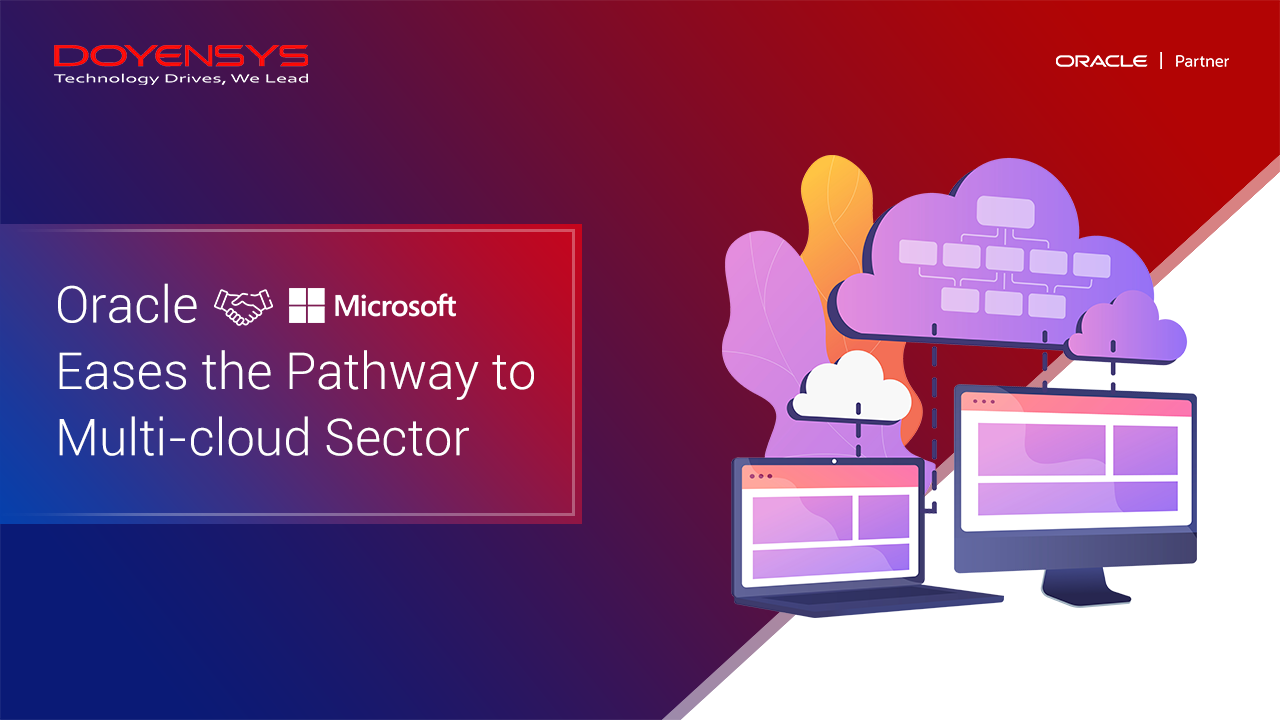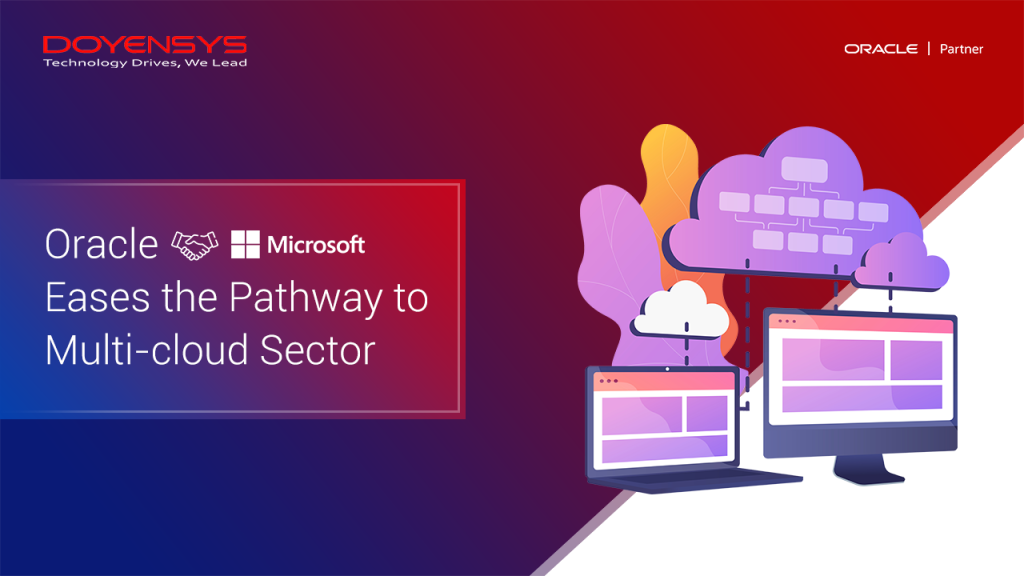
Organizations now manage infrastructure, secure data, and develop apps in fundamentally different ways, thanks to the cloud. Rapid resource provisioning, demand-driven scaling, and worldwide deployment have opened up new avenues for innovation. IDC anticipates that for the first time in 2022, spending on cloud infrastructure will surpass that on non-cloud infrastructure.
 The Multi-cloud Approach is the New Reality:
The Multi-cloud Approach is the New Reality:
Enterprises are increasingly operating in a multi-cloud environment where apps and data are deployed across multiple public cloud providers as cloud usage grows. 64 percent of respondents presently have a multi-cloud setup, according to IDC’s 2021 IaaS view poll of 1,500 cloud buyers. Of those, 75% have a cloud-based application that regularly communicates with databases in other clouds (either another cloud or on-premises).
The use of numerous clouds is motivated by several variables. It is often a component of a best-of-breed strategy for choosing cloud services. Others use it to diversify their risk and reduce vendor lock-in. The fact that businesses have reported starting with one cloud provider and expanding to others owing to technical or architectural restrictions may be the most significant.
Those who manage a multi-cloud environment are quick to recognize the difficulties. The unique workflows and management tools hamper interoperability in each public cloud. Across providers, there is a lack of uniform security and monitoring, which reduces visibility and raises the risk of vulnerabilities.
Large amounts of data cannot be easily transferred across clouds due to performance (high latency connections) and cost issues (data transfer fees). Although some cloud providers give a small number of tools to aid integration, the onus of solving integration is often placed on the customer.
From a commercial standpoint, this is understandable because many cloud providers would prefer that users commit fully to their platform than to enable a multi-cloud scenario.
How is Oracle Making the Multi-cloud Journey Easier?
Oracle Cloud Infrastructure (OCI) has allowed various multi-cloud capabilities via cloud services. To achieve multi-cloud freedom, Oracle got ensured with advanced deployments, database cloud services, comprehensive monitoring tools, and strategic alliances.
Here are 5 ways clients can use Oracle Cloud Infrastructure to integrate multi-cloud:
1. Oracle Expanded in 37 Cloud Areas:
With 37 cloud regions already available & seven more anticipated by the final part of 2022, Oracle has emerged as one of the world’s networks of data centers that is expanding at the fastest rate.
Oracle Cloud offers more than 80 cloud platforms and infrastructure services. The majority of areas also provide a SaaS range of cloud applications. With public & hybrid cloud choices, Oracle Platform offers local authorization, regional compliance & genuine business continuity across applications and infrastructure.
2. Oracle Cloud VMware Services:
Clients desire the option to shift their VMware data to the cloud server without changing them. Also, they need to preserve continuity with current VMware-oriented tools, procedures, and rules while gaining scalability and agility.
The standalone product on the global market that offers a native VMware-oriented cloud space downloaded within a customer’s tenancy with total access using well-known VMware features is Oracle Cloud VMware Solution (OCVS).
Customers need not re-architect their applications or retool their processes to convert or expand various on-premises VMware-oriented databases to OCI across different regions using the Oracle VMware solution.
3. Exadata Cloud@Customer:
For compliance, regulatory, and performance-related reasons, large parts of mission-critical information continue to function over the on-premise arena for some clients. Their crucial non-Oracle workloads will also demand highly dependable, secure, and cost-effective infrastructure in addition to Oracle workloads.
Oracle’s Dedicated Region – Cloud@Customer may address these issues by delivering the capabilities of its latest cloud sector on-premises. On highly accessible and highly secure Oracle Cloud Infrastructure, customers may average the mission-critical workload devices and applications earlier installed on high-cost bespoke hardware, resulting in work efficiencies & modernization chances.
4. Microsoft Azure Interconnect:
CIOs must be able to move those programs and databases to the cloud without sacrificing speed and availability. Oracle and Microsoft have been working together on a cutting-edge multi-cloud strategy because they are dedicated to serving their shared enterprise customer base.
Oracle and Microsoft have teamed up on cross-cloud connectivity to initiate their shared users to function their information over Oracle CIoud Infrastructure, Azure & connect them. Customers might not only benefit from this multi-cloud download & connectivity, but some have already discovered that functioning their Oracle workloads on OCI has increased their value.
Breaking the Multi-cloud Barrier:
To ease the multi-cloud journey further, Oracle and Microsoft have teamed up again to bring innovations. Only this time, to make things simpler specifically for Azure customers!
This new service aims to provide an automatic and seamless solution to the most frequent problems associated with multi-cloud. Oracle designed an interface that appears familiar to Azure users because it understood that Azure consumers might not be familiar with OCI vocabulary and constructs. Connecting OCI and Azure accounts is simple, thanks to the one interface.
The service automates the integration of identity, networking, and monitoring. A collaborative architecture enables Oracle Database Service for Azure, allowing a ticket to be opened with either cloud provider and receiving coordinated resolution outcomes.
The new solution addresses a significant issue by enabling Azure clients with on-premises Oracle deployments to move their RAC and Exadata systems to the cloud. According to Oracle, after clients utilize RAC & Exadata on-premises and enjoy the advantages of zero downtime at the time of issues or scheduled check & Exadata’s optimal performance, they demand the cloud-based version of these architectures.
Users of Azure may now utilize a straightforward Azure interface to operate their Oracle databases on Exadata in OCI. A large Microsoft application account’s Oracle-Microsoft experience can be replicated in the cloud, like managing two clouds as one.
And not just that! Users now have a convenient way to connect their OCI tenancy to their Azure subscriptions, thanks to the new Oracle Database Service for Microsoft Azure. The service makes it simple for Azure users to incorporate their service by federating Azure Active Directory identities and automatically configuring everything needed to connect the two cloud environments.
Additionally, it offers a recognizable dashboard for Oracle Database Services on OCI utilizing Azure terminology and Azure Application Insights monitoring.
Resolve your Multi-cloud Challenges:
Market trends lead to a multi-cloud future where customers can pick & select the finest services to satisfy their requirements completely. Oracle and Microsoft set the bar high by providing multi-cloud solutions that automate the most frequent provisioning operations with a consistent and recognizable user experience. It enables users to combine the greatest features of OCI with Azure services, giving them the best of both worlds.
Gartner concurs that choosing multi-cloud providers will increase capabilities and lower costs. To meet your company’s requirements, Oracle Cloud Infrastructure (OCI) has offered great care to provide an extended set of multi-cloud outcomes in technical installations, database services, broad maintaining ability & strategic alliances.
Final Words:
Don’t hold off if you’re prepared to migrate your company to the Oracle Cloud Infrastructure. Start by talking to an Oracle Partner like Doyensys about your company’s needs, create a cloud strategy, and immediately put your company on the road to multi-cloud success!
